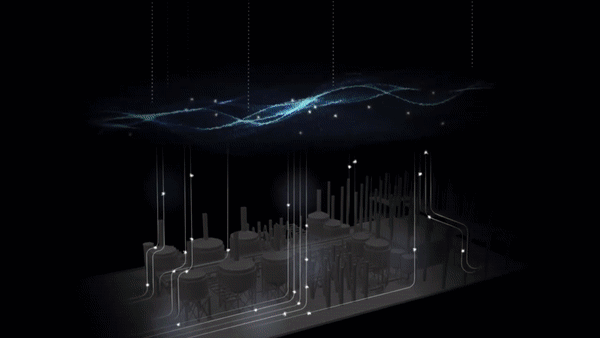Microsoft: empowering developers since 1975
Microsoft has been hard at work to make developers’ lives easier. Satya Nadella and his teams have set themselves the goal of bringing devs new tools and features for a better work life. Because as they say at Microsoft: developers are deeply involved in shaping our history and our future.
Developers are shaping the world
At the Microsoft Build (MS Build) conference earlier this year, developers were singled out as critical stakeholders in history. Tech experts develop solutions that impact society, governments, the environment, and much more. They are digital-first responders whose choices are having a far bigger impact than just on technical aspects.
Over the last few years and during the pandemic, developers were the ones helping businesses to adapt to a new paradigm set by Covid, whether it’s better access to education through home schooling or by helping us remain connected with our loved ones.
As Nadella promised, Microsoft wants to be the “platform for platform creators”. It wants to bring developers together and help them create a better world.
A full ecosystem, dedicated to efficiency
To do this, Microsoft wants to maximise their efficiency with a fully integrated ecosystem and a whole set of tools.
For years, developers have been able to manage and collaborate on code versions in an iterative way on GitHub. But, as every project comes with its own dependencies and configurations, it has become increasingly difficult for teams to get up and running and effectively share the same environment.
Codespaces is a game changer on that front. It works as an instant dev environment (IDE) provider, allowing developers to go from checkout to code to commit faster, thanks to the Github ecosystem. Codespace is promising development teams A-to-Z support, including all the necessary tools to achieve their project, from platform to editing and configuration. It also allows them to add personalised extensions according to the project. With a wider variety of coding languages to use, developers will enjoy more flexibility in their coding experiences.
All development and collaboration tools (including the IDE) are available on the cloud, so developers can code regardless of their hardware or environment (Windows or Linux). Its tool chain and services mean that any idea can be developed seamlessly into the code, which would be directly available on the cloud.
Towards a meta-platform
Over the years, Microsoft never stopped improving its ecosystem to make coding easier than ever before. They have progressively switched from an ecosystem based on ownership (where you could only use Microsoft’s languages in a Microsoft environment), to a meta-platform. Nowadays, developers can build their own coding experiences and choose the tools they prefer in an open ecosystem. As an example, before you had to use C# to use Visual Studio. That’s no longer the case as Microsoft has been progressively opening up to non-Microsoft languages such as Python and JavaScript. Lately, the platform has gradually been welcoming and integrating tools and functionalities from the open source world.
Microsoft is increasingly positioning itself as a meta-platform where anyone can build its IDE and collaborate with hybrid profiles – no tech background required. Some new tools such as Power Apps are making this hybrid model of collaboration easier by offering more intuitive ways to develop new apps.
Microsoft Teams is also following this trend by increasingly turning into a cross-device collaborative app with new features facilitating collaboration and co-creation.
Bringing physical and digital worlds together with metaverse apps
Imagine if you could test out ideas in the virtual world before committing in the real world? Microsoft is making this happen with its metaverse-ready technology stack. This combination of apps will help businesses to optimise their physical reality thanks to a duplicate digital model.
How? Enter digital twins. Digital twins model a company’s physical reality (infrastructure, processes, etc) into a digital version that’s entirely synchronised with the real world. Metaverse apps rely on this digital reality to optimise the physical one. Through a diligent monitoring of the physical environment through the digital one, you’ll gather valuable insights.
Among other things, metaverses allow companies to track past events in their physical environment thanks to a continuous analytics follow-up. This makes it possible to detect anomalies even before something happens. For example, when a company gets negative feedback on a specific order, it’s possible to go back in time and check what happened with the order inside the digital twin. Did the problem occur during shipment, packing, or in the supply chain? When the problem is identified, the metaverse helps to define a pattern in which the problem may happen again. When the pattern is detected in the digital world, it’s possible to act directly in the physical world before the problem occurs.
Metaverses can also help companies to set an autonomous control that will help them predict future needs. As an example, it can track down which machine might need maintenance work based on its performance and send an alert before it falls over in the physical world.
Metaverses can even help businesses to take strategic decisions by simulating a scenario on the digital twin. By seeing how a specific decision would affect a product, for example, a business can make smarter decisions.
Setting up metaverses and digital twins require developers’ knowledge. This involves them in critical decisions at a high level. Microsoft is helping them set a reliable and complete digital environment through its metaverse technology stack. But it also encourages them to create their own metaverse apps to unleash the potential of the technology stack and dramatically improve the processes and models of their company.
Through various conferences, Microsoft emphasises how important and even critical developers have become. They are the cornerstones of our evolution through the apps, platforms and other features they create. By giving them a more integrated suite of tools, Microsoft is helping them increase their efficiency. They are also encouraging them to stay within the Microsoft ecosystem – since everything is already there. The platform wants to empower them even more, by giving them the power to shape the world beyond its physical boarders and create a full digital reality in sync with the physical one.
At Emakina, we’re working with some of the top developers in the business to provide outstanding experiences – thanks to various Microsoft platforms such as Kentico, Sitecore and Sitefinity. We are thrilled to see what Microsoft is working on and can’t wait to try these new tools to show the world what can be done.
Our recent blog posts
See all blogs-
How is AI’s synthetic data enhancing User Experience Research? Technology

-
Web3.AI Rising : How new technology can add value to your business

-
How generative AI helped us create an e-commerce app – with personalised content – in just 2 weeks Technology

-
Can you build a foodie app in 3 days using Generative AI? (Spoiler alert: yes!)




